Survival food is essential to keep moving on and surviving any struggles in 2023, just like water supplies are. First of all, your survival skills and situational awareness are what will save you in an emergency, even in the worst-case one. And if you have a garden you want to use for survival, your knowledge should be sufficient. Absolutely, proper survival gear in your well-packed backpack can maximize your survival chances, but your abilities and knowledge are of real essence.
Growing plants that produce fruit or vegetables inside your house is not only a nice way to spice up your surroundings and make your living place look better but also a wise choice for a survivalist. In times of uncertainty and danger, many might turn to their own home-grown food for nutrition, as grocery stores may become unavailable. However, even if your main objective is not survival, growing your own tasty fruit is simply fun and quite interesting. If you want to grow some vegetables – consider getting build a Walipini greenhouse.
In this article, we will figure out ways to grow fig trees indoors, find out how to care for them, what figs grown indoors are good for, etc.
Fig Trees: Everything You Need to Know
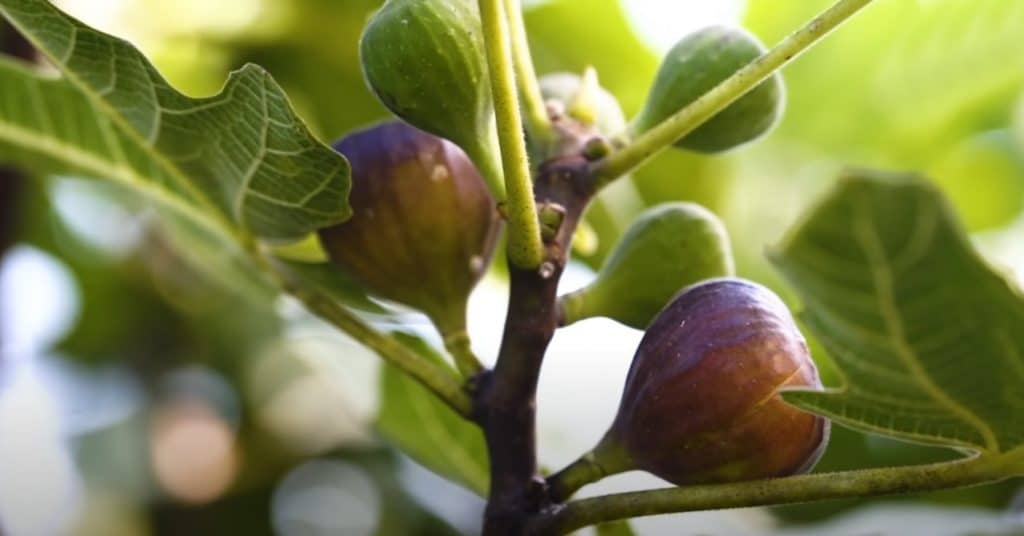
Before we start, let’s get familiar with some of the most well-known kinds of fig trees.
The common fig
The common fig is a tree that is usually grown outdoors. Cultivated from ancient times, it is known for its delicious fruit and serves as a decorative plant. However, it is generally grown outdoors, as it requires a lot of sunlight and can get too big and inconvenient for a houseplant. The common fig’s trunk is white and relatively thin. The tree’s leaves are fairly huge, reaching almost ten inches long and have several lobes. The common fig produces the fruit we call figs — sweet, pear-shaped, and purple, with many tiny seeds inside. Figs can be consumed fresh or dried, made into desserts, jam, etc.
The Benjamin fig
This type of fig, also known as the weeping fig, is a popular indoor decorative plant, as it is quite easy to look after and can tolerate growing conditions that can cause other houseplants to die. Thus, you might recognize it as a ficus tree or simply a ficus, another commonly used plant name. In nature, it can grow up to 18 feet tall. However, it is obviously much smaller when grown in a pot inside of the house. Its bark is usually gray, its leaves are of simple oval-ish shape, and it produces small fruits that are orange or red when ripe.
The fiddle-leaf fig tree
Ficus lyrata (or fiddle-leaf fig tree) is harder to grow than the previously listed fig trees. Unlike common figs, fiddle leaf figs cannot tolerate poor growing conditions – the plant requires much more attention. Shaped like a violin, its gorgeous dark green leaves are much bigger than those of a common fig tree or a ficus, so fiddle-leaf figs require more direct sunlight during the growing season. In addition, its trunk is usually grey-ish or brown-ish. As a result, a fiddle-leaf fig tree barely ever produces edible figs when grown indoors. Nonetheless, fiddle-leaf figs are still widely popular because of their elegance and ability to spice up any interior.
The Petite Negra Fig
The fig tree, known by the scientific name Petite Negra, is the best option for those who want to grow a fig tree with edible fruit but don’t have enough space in their house for a common fig tree, which can get pretty big even when grown indoors. The Petite Negra fig, also known as the little black fig, can only reach up to 3-8 feet tall, making it the ideal fit for indoor gardening. In addition, it produces edible and tasty fruits.
Cultural significance
Figs are quite significant culture-wise, having been mentioned multiple times throughout the Bible, for example, in Jesus’s preachings. It is also important to Muslims, as it was mentioned in the Quran. Also, it is considered sacred in many Eastern religions. Moreover, the tree of life in Hinduism is said to be a fig tree! There is even a species within the Ficus genus by the Latin name of Ficus religiosa, and it is sacred and religiously significant to many cultures and beliefs. It was also oftentimes mentioned in Greco-Roman mythology and served as a symbol of fertility and prosperity.
Growing a Fig Tree Indoors
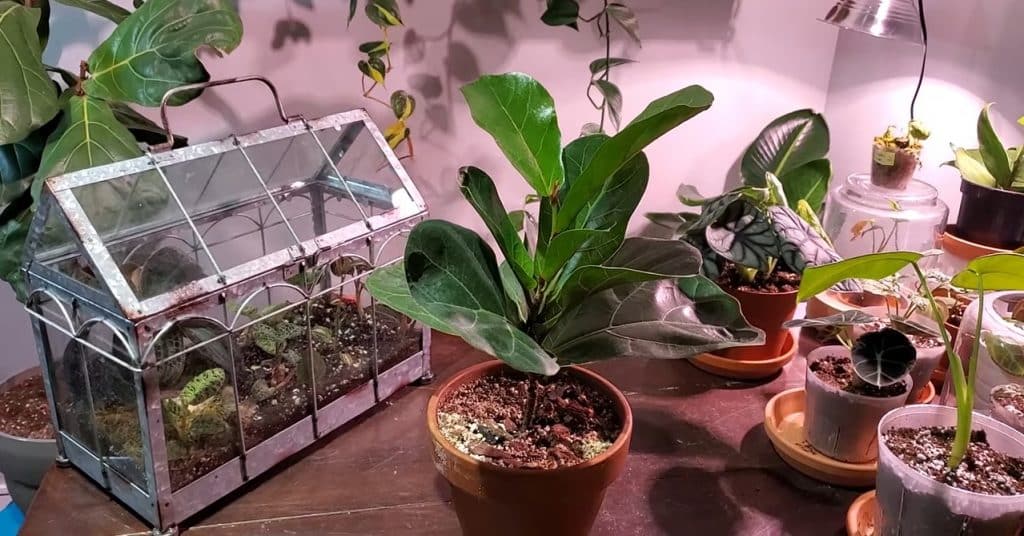
Whether you want to harvest fruit or plan growing fig trees for decorative purposes because you want the tree to be a nice touch on your interior, you have to get acquainted with certain rules and follow the instruction given below step by step. If you treat your fig tree with proper care, the chances are that your efforts will start to bear fruit (pun intended), and your fig plant will be healthy and a pleasure to look at. Maybe you’ll even get to taste its ripe fruit after a few years!
1. Here’s a detailed guide on how to grow fig trees indoors and take good care of them:
First and foremost:
- Please note that if you’re not an experienced gardener yet, growing fig trees from seeds is most likely not the best idea, as it requires lots of skills, resources, and patience. Chances are, you will be much more satisfied both with the final result and the growing process if you buy a potted fig tree from your nearby greenhouse or a local nursery.
- After you have bought a tree, you have to re-pot it: it cannot grow properly in the small pot that you bought it in.
2. How do I choose the right pot for my indoor fig tree?
Here are some requirements to keep in mind when purchasing a planter for your fig plant:
- Drainage holes are a must! Fig trees grown in containers without drainage holes will die from overwatering, as the excess water will have no way out of the pot and will instead accumulate near the roots, causing your plant to suffer from root rot.
- It shouldn’t be too small; you can control the tree’s size and height by changing the pot size.
- Most gardeners recommend buying a lightweight container. You can also opt for a container with wheels, meaning that you can move it around effortlessly. Keep in mind that fig plants don’t like being moved too often.
3. Re-potting a Fig Tree
Now that you have chosen the proper planter for your fig plant, you need to remove the fig from its current pot and place it in the new one.
Put two inches of universal potting soil into the new pot. Press on the old small container. Then, gently and carefully remove the fig plant from its old pot. Try your absolute best not to damage the roots. After you’ve removed the fig, place it into the bigger container. Add dirt and soil.
It is recommended that you buy a potting mix for your fig tree. As already mentioned in the article, good drainage is vital for your fig to grow properly. Gardeners advise that you add bark chips to help with that. To retain moisture and therefore help lower the amount of required watering, we recommend that you use mulch.
4. Choosing the right spot for your fig plant
The next step in the growing process is choosing the right space for your soon-to-be fig tree. Here are some tips on how to choose the best spot for your fig:
- Although figs need warmth and sunlight to strive, placing your fig plants in direct sunlight is probably not the best idea, as it may lead to your tree losing leaves. You still have to place the plant in a sunny spot. Bright but indirect light is better for figs, and in proper lighting conditions, they will grow rapidly.
- As already mentioned, it is better not to move your figs around too often, so we recommend that you put your fiddle leaf fig tree in a secure place and leave it there.
- Keep the tree in a place protected from freezing temperatures.
5. Lighting and temperature
As you already know, proper lighting is crucial for growing healthy and strong figs. During summertime, if possible, place the container with your plant outdoors, in full sun. When it gets too cold, put the container inside again. Some gardeners recommend purchasing an LED growing light as a way to substitute for the sunlight.
Fig trees require warmth to grow healthy and strive, with the best temperature around 60 degrees Fahrenheit or above. In early spring, when it starts getting warm and sunny, place your container-grown fig outside of the house for some time, and then put the plant back inside when the sun goes down. That will help your fig in acclimating to the changing temperature. If possible, position the plant outside during summertime to give it the maximum amount of sunlight possible.
6. Watering Schedule & Nutrition
It is highly recommended that you purchase a drip irrigation tube and water your fig for 10-20 minutes each morning to keep the potting medium from getting too dry. If not, make sure to water your plant once a week or so. Keep pouring water until it starts coming out of the drainage holes. Room temperature water (around 70 degrees Fahrenheit) is the best fit for a fig tree. A fiddle leaf fig, for example, is very sensitive to watering issues. Fiddle leaf fig trees and other kinds of figs tree all respond negatively to both underwatering and overwatering. Keep the soil moist, but don’t let your tree soak in water.
In the growing season, when spring and early summer roll around, fertilize your plant with a high nitrogen fertilizer every month or so. You can buy a universal fertilizer or use natural fertilizers like compost: that works too. In autumn, you can cut down the amount of fertilizer needed to once every 2 months. Finally, you can stop fertilizing your plant during wintertime. In the winter, gardeners recommend only watering the plant when the potting medium gets dry. Note that it is completely normal for figs to lose their green leaves during wintertime.
In addition to watering and fertilizing, your plant needs re-potting every time its roots get too big. Purchase a planter that is roughly 2-3 inches bigger than the previous one, put 2 inches of potting soil on the bottom, place the tree there and you’re all set. You may also prune it when necessary to maintain your desired size. By the way, the pot size is a defining factor in the size of the plant as well.
Issues You Might Face
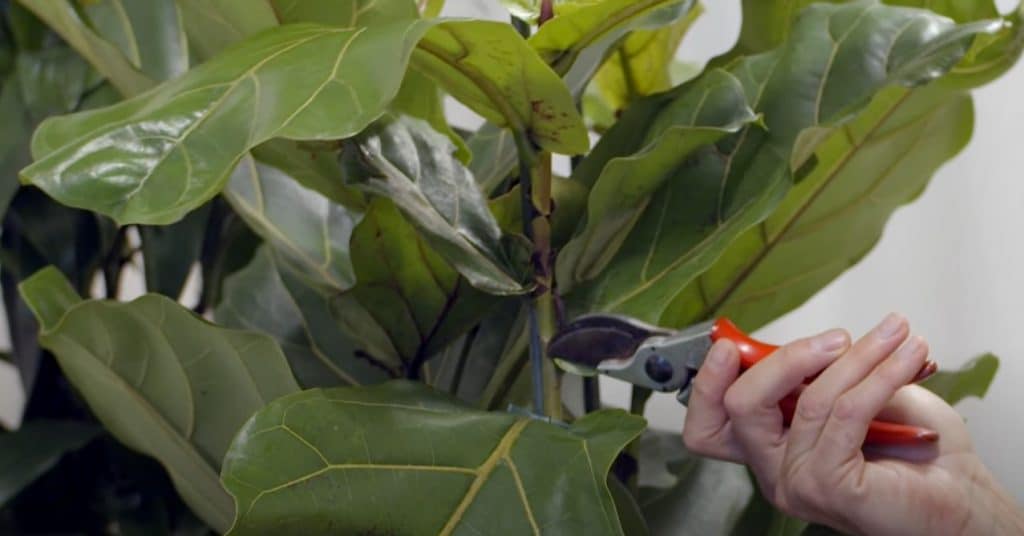
If you notice that your plant is losing leaves, that is an alarming signal. It means that your plant is under stress. Your tree may become stressed due to poor growing conditions, such as:
- Infestation. Spider mites and mealybugs are common pests that can harm your plant. These bugs might not be easy to notice. Please pay attention to the sticky substance on your tree’s leaves and bark: it is a sign of their presence. To get rid of them, wipe your tree’s trunk, branches, and leaves with an alcohol-soaked napkin. Neem oil also works as a treatment.
- Bacterial infection. Just like humans, plants can get sick. Yellowing leaves may be a sign of iron deficiency or a bacterial infection. If your plant is turning yellow, cut off the infected leaves and change the soil.
- Overwatering. As we have already established, overwatering is as bad as underwatering for these plants, and drainage is crucial for their proper growth and development. If overwatered, the tree’s roots will begin to rot, eventually killing the plant. If you notice that your tree is dropping leaves, it might mean that it suffers from too much water. Another symptom of overwatering is the presence of brown spots on the leaves. Adding bark chips and sand may help to improve drainage and better the tree’s condition.
- Underwatering. The symptoms of underwatering are similar to the signs of overwatering: dropping leaves, brown spots, overall poor condition of the tree. Firstly, you need to figure out whether the issue lies in overwatering or underwatering. Next, check the roots, the soil, and pay close attention to the watering schedule. To retain moisture, try adding some mulch. Do not forget to water your plants on time, or buy a specialized timer device to automate the process.
- Too much or too little light. Figs need sunshine to be healthy. However, keep in mind that too much direct light can burn the tree’s leaves. If you notice that your plant is experiencing leaf loss and scalding, try changing the tree’s location to a spot with bright but filtered sunlight. If your tree is positioned in a spot that is not sunny enough, it may start losing its leaves, or the leaves might turn yellow. The general condition of the tree will worsen significantly. To solve the issue, move your container-grown plant to a warmer, sunnier place.
- Temperature changes. Just like the vast majority of other plants, figs are sensitive to temperature changes. If your plant’s leaves change color or you notice brown spots appearing here and there, that might be a sign that your plant is under stress due to a temperature-related problem. Keep your plant in a consistently warm place, protected from drafts.
- Re-potting done wrong. We have already established that you might need to change the pot every once in a while when growing a fig tree. However, when done wrong, repotting might harm the tree. For example, this may happen if you accidentally damage the roots. To prevent such a situation, remove the tree from its pot gently and carefully. Also, try not to change the planter too often.
Overall, if you care for your plant and pay enough attention to its condition, you will be able to grow a gorgeous tree that will make your home more beautiful and will produce tasty ripe figs when the time comes!
Harvesting Figs
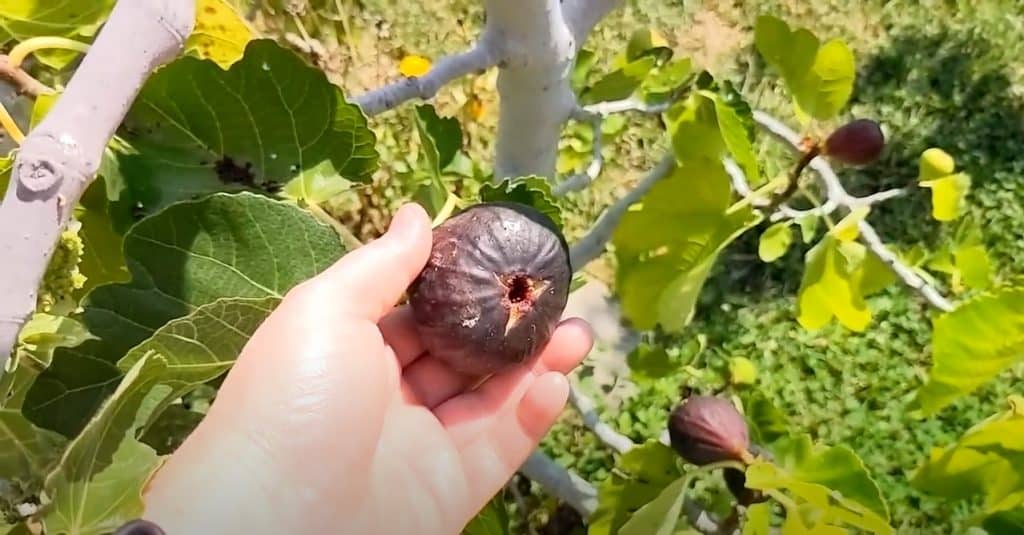
When do I harvest my figs?
The time for harvest differs among various kinds of fig trees. When growing a fig tree, do your research and figure out the color of the ripe figs of your tree specifically, as the colors may vary from yellow to dark brown. That way, you can look at the figs and understand if they are ready to be harvested. If the fig is soft, it means that it is probably already ripe enough for you to harvest it. Most trees will produce fresh figs during the summertime.
What are figs good for?
People have been cultivating and harvesting figs for thousands of years — reasonably so. Figs are said to be great sources of certain minerals, such as calcium and potassium. They can improve the state of your bones and prevent diseases like osteoporosis. Figs are thought to be good for your digestive system as well. They are an immune-boosting superfood: figs provide vitamins A and C, which can help your immune system function better. Moreover, there is proof that figs can manage glucose and fat levels and even kill cancerous cells.
In addition to their numerous health benefits, figs are incredibly tasty. They can be consumed fresh or dried, made into jams, desserts, pies, etc.
In Conclusion
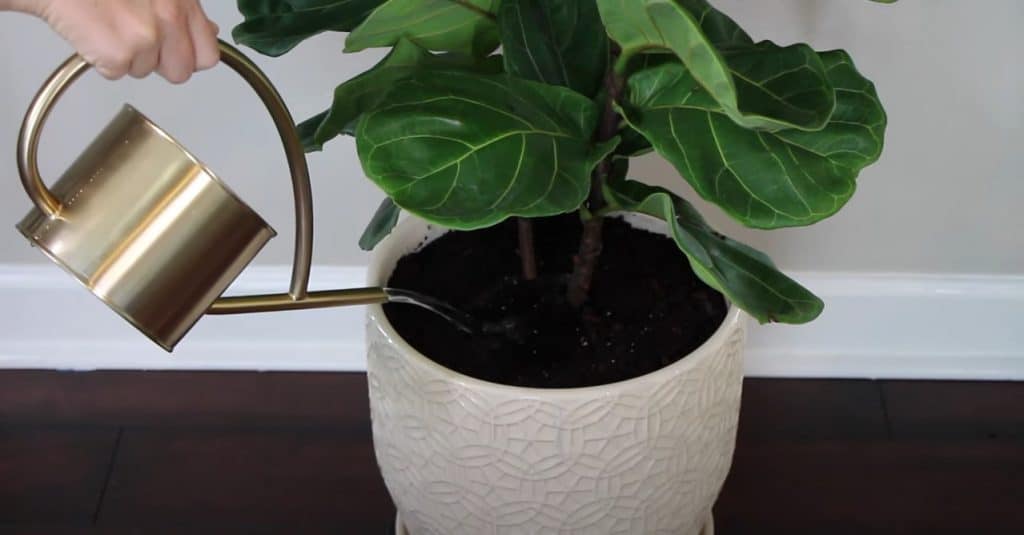
Figs are good for your health and a pleasure to look at. Even if you’re a beginner, you can grow them pretty easily, although some issues may arise in the process of the tree’s growth.
Frequently Asked Questions (FAQ)
If you have any questions left, we will try to answer them in this segment.
Where should I put a fig tree in my house?
As already mentioned in the article, we recommend placing your tree in a warm and sunny spot, away from cold drafts. Also, please keep it in a secure place: you don’t want to knock it over by accident! And remember not to expose your plant to low temperatures.
Do indoor figs need a lot of light?
Short answer: yes, they do! Some figs need more sunshine than others: it can depend on the size of the tree’s leaves. However, keep in mind that too much direct light can burn the leaves and harm your plant. So as good as the sunlight gets, your best option is to moderation.
Where do I buy a fig tree?
You can buy seeds or pick up a tree from your local nursery or greenhouse. If you’re not a pro gardener yet, we recommend that you buy a potted small tree to save you the headaches of growing it from the very beginning!



